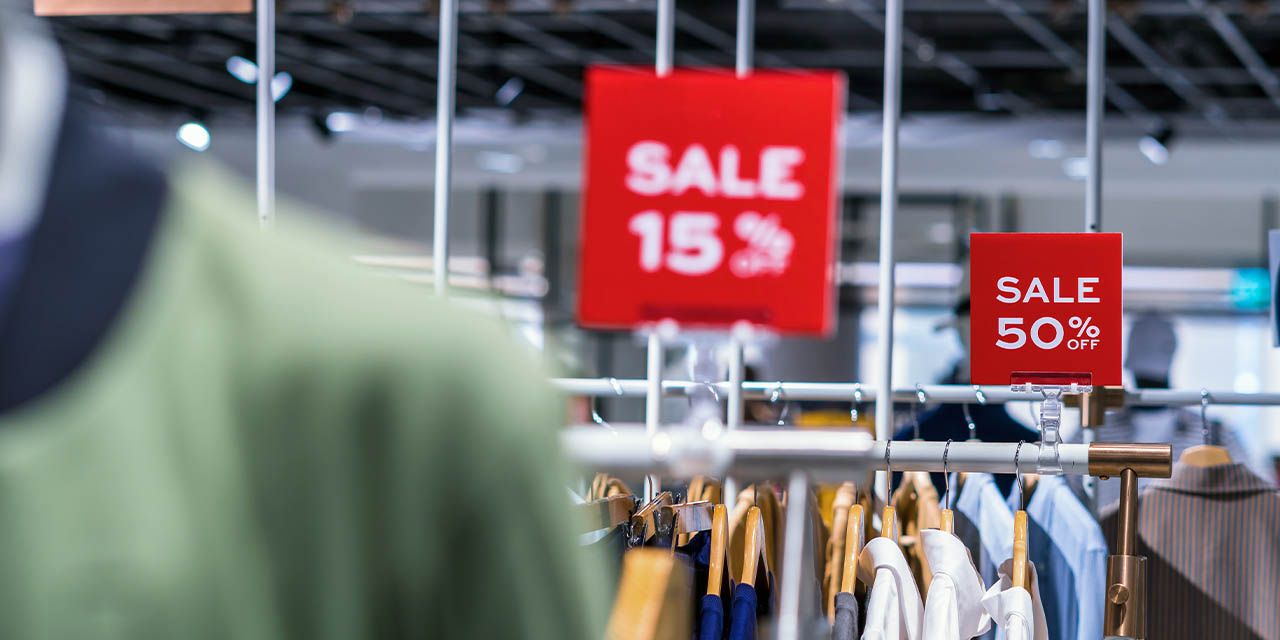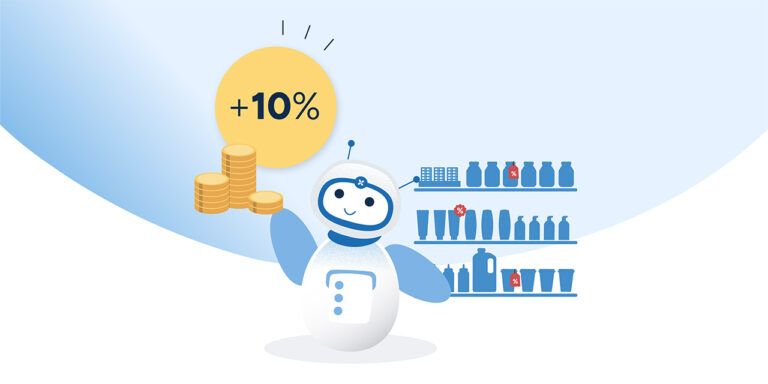Q&A: How optimizing the price of a few Key Value Items (KVIs) can fuel market share growth
Feb 20, 2025 • 6 min
Price wars rage in the retail landscape, with retailers vying for shoppers’ attention. Victory depends on the strategic pricing of specific items that can turn shoppers’ heads and influence their opinions on a retailer’s prices.
We sat down with RELEX Presales Strategist Johan Östlin, who has over 13 years of experience in the field of pricing and promotions for retail, to explore how retailers can identify and effectively optimize the prices of these items —all while safeguarding their bottom line.
Let’s get the ball rolling. How do shoppers perceive ‘good’ value, and can retailers influence or change it?
Johan: What counts as good value comes down to who your customers are. Their perception of a retailer’s prices largely depends on the products they typically buy. I’ll use myself as an example: as someone shopping for a family, I’m buying a lot of bread, yogurt, and baby products. As a result, I’m attuned to the prices of these items and will react if I see a change in price for them at a specific retailer. Known as Key Value Items (KVIs), they have the power to shape my perception of a store’s prices.
Most customers enter a store with a specific goal, often called a shopping mission. They may have the family weekly shop, or the in-laws are coming over, requiring snacks and refreshments. These missions are basically why people go into a store — understanding them is crucial to drawing in customers. Each mission will include different KVIs, so what shapes a store’s price perception will vary accordingly.
“For retailers, price perception often hinges on a handful of key products that customers care about and compare across stores.”
Retailers must ask themselves: “If my customers buy these essential items here versus elsewhere, are they getting the best deal?” They need to determine what price adjustments for these items will be enough to catch shoppers’ eyes.
What factors are involved in identifying Key Value Items (KVIs)?
Johan: Firstly, you need to look for items that are in high demand. When customers spend a lot on a particular item and buy it in large quantities, it likely indicates that this item matters to them. Then, there’s how frequently customers purchase an item. Take milk, for example. It doesn’t cost much for a carton, but since you buy it so often, you’re much more attuned to any changes to how much it costs.
Price elasticity is one of the most important metrics, measuring customers’ sensitivity to price changes for specific products. Items with high elasticity will experience a significant increase in demand after a price drop, which is a fundamental attribute of KVIs.
From a planning perspective, what is a pressing challenge for retailers working with KVIs?
Johan: To grow their market share, retailers must position themselves as the best value destination for shoppers. But they can’t compete on prices for everything — they’d go out of business! Instead, retailers need to focus on KVIs and missions that carry the most weight for shoppers.
The tricky part is that retailers often rely on their gut feeling to determine which products are truly Key Value Items. While category managers typically have a strong intuition about what resonates with customers, shopping patterns are complex and always changing, making it tough to pinpoint KVIs based solely on instinct. That’s why adopting a more data-driven approach is essential for accurately identifying these crucial products.
You mentioned taking a more data-driven approach to KVIs. How can a pricing solution enable retailers to do this?
Johan: As mentioned earlier, retailers often take too simplistic an approach to identify KVIs. Relying on gut instinct or just focusing on sales volume won’t cut it. To excel in their competitive positioning, retailers have to delve into their data.
Pricing platforms like RELEX constantly gather and store massive amounts of data on customer behavior and products. All this information provides a detailed picture of how often customers buy certain items, whether products are frequently on promotion and their price elasticities. This level of data is precisely what is needed to identify KVIs.
With RELEX, having all this information in one place makes things much easier. Retailers no longer need to switch between systems to gather what they need. The data is right there at their fingertips, so they can jump straight into analyzing their KVIs.
Beyond improving efficiency, this shared data stream transforms how teams collaborate on KVI strategies.
“When everyone works with the same information, teams can plan effectively together and make faster, more accurate decisions.”
Can you explain the balance retailers must strike between competitive positioning and protecting the bottom line?
Johan: It’s a tricky balance. Retailers will likely already be battling over the prices of the items that matter, doing all they can to become the go-to destination for shoppers wanting to buy them, even at the cost of profit margins.
Retailers make this work by making calculated price changes. When they reduce the price of certain items, they look to compensate for the loss in profit margins elsewhere. They ask themselves: “Where can I lower prices to bring in more shoppers, and where can I increase them to keep the business healthy?” In a sense, they’re playing a zero-sum game between increasing profit margins and growing market share.
To bolster the bottom line, retailers often raise the costs of products with low elasticity. These are items that customers tend to buy regardless of price changes, so bumping up their prices offsets the losses made by pricing KVIs competitively.
How does RELEX help retailers make better pricing decisions for KVIs?
Johan: I was wondering when this question was coming!
Let’s start with RELEX’s scenario testing, which allows retailers to see precisely how a price change might play out before making it in the real world. Say they’re thinking of tweaking the price of a KVI after identifying an opportunity to be more competitive. Instead of making a change and simply hoping for the best, The RELEX platform enables retailers to run pricing scenarios to determine whether it would have the desired outcome — a spike in sales volume. They can then decide whether to move forward with the tweak or go another way.
Instead of retailers having to guess which items are most suited for a price change, RELEX can do the heavy lifting for them. Suppose the strategy is to optimize margins. Rather than casting a wide net and evaluating numerous items, RELEX uses customer purchase data to pinpoint products where a price increase will make the biggest difference to the bottom line. Or, if the aim is to be more competitive, it can point out the items that would generate the most sales following a price reduction.
RELEX can also streamline how retailers set their prices. Consider a retailer managing 10 Key Value Items, each with a different price elasticity. Instead of manually creating calculations for each product, they can insert one clear rule: “Become X% more competitive than other retailers for these items.” The system then uses the items’ price elasticities to suggest optimal prices that meet the rule. Of course, RELEX doesn’t make these calculations in isolation but factors in the potential impact of these changes on other items.
To elaborate on the impact of price changes, they can sometimes trigger a chain reaction, leading to unintended consequences. This is where RELEX comes in, helping retailers identify potential conflicts, such as highlighting how a price drop on name-brand coffee might cannibalize private-label sales.
“Data-driven insights on the impacts of price changes on multiple products enable retailers to avoid unintended ripple effects across the business.”
To finish, what do you want someone to take away from this discussion?
Johan: When it comes to shopping, we’re creatures of comfort. Many of us have those go-to stores we know provide good value for the items that make up our shopping missions. Once this perception has developed, it tends to stick. Yet even the most entrenched shopping patterns can be disrupted by tantalizing prices that are too good to pass up.
However, for retailers to do this, they must set themselves up for success. With a platform like RELEX, they’ll have two significant advantages: First, they’ll have the right amount of data to identify KVIs (no more decisions made from gut instinct alone). Second, they’ll have the right tools to take action, fine-tuning the prices of those products with precision to hook shoppers away from the competition.



